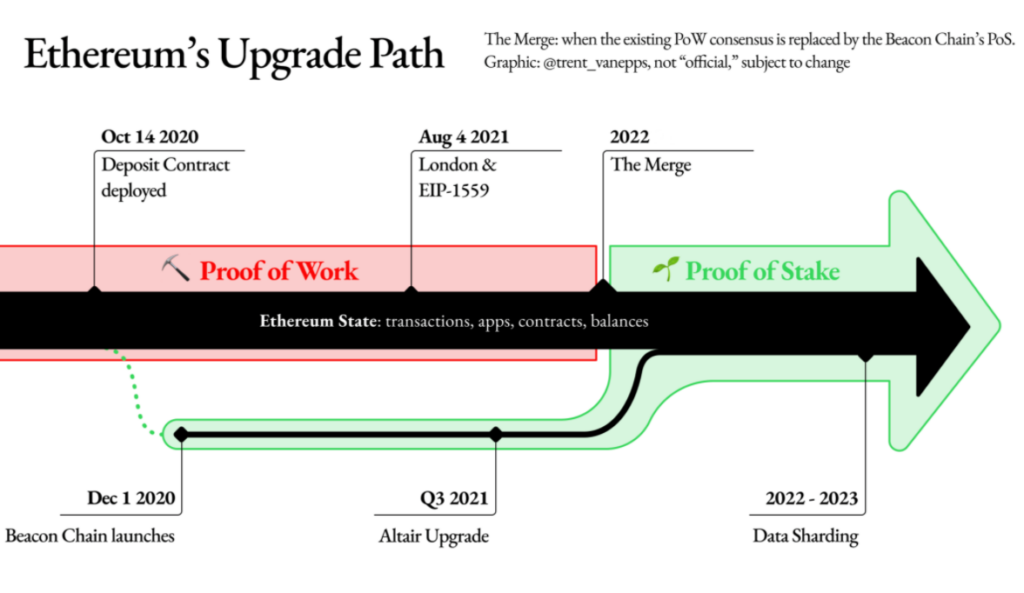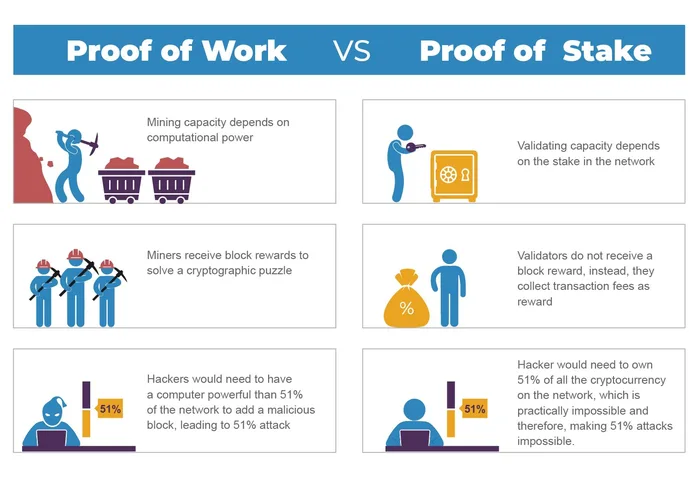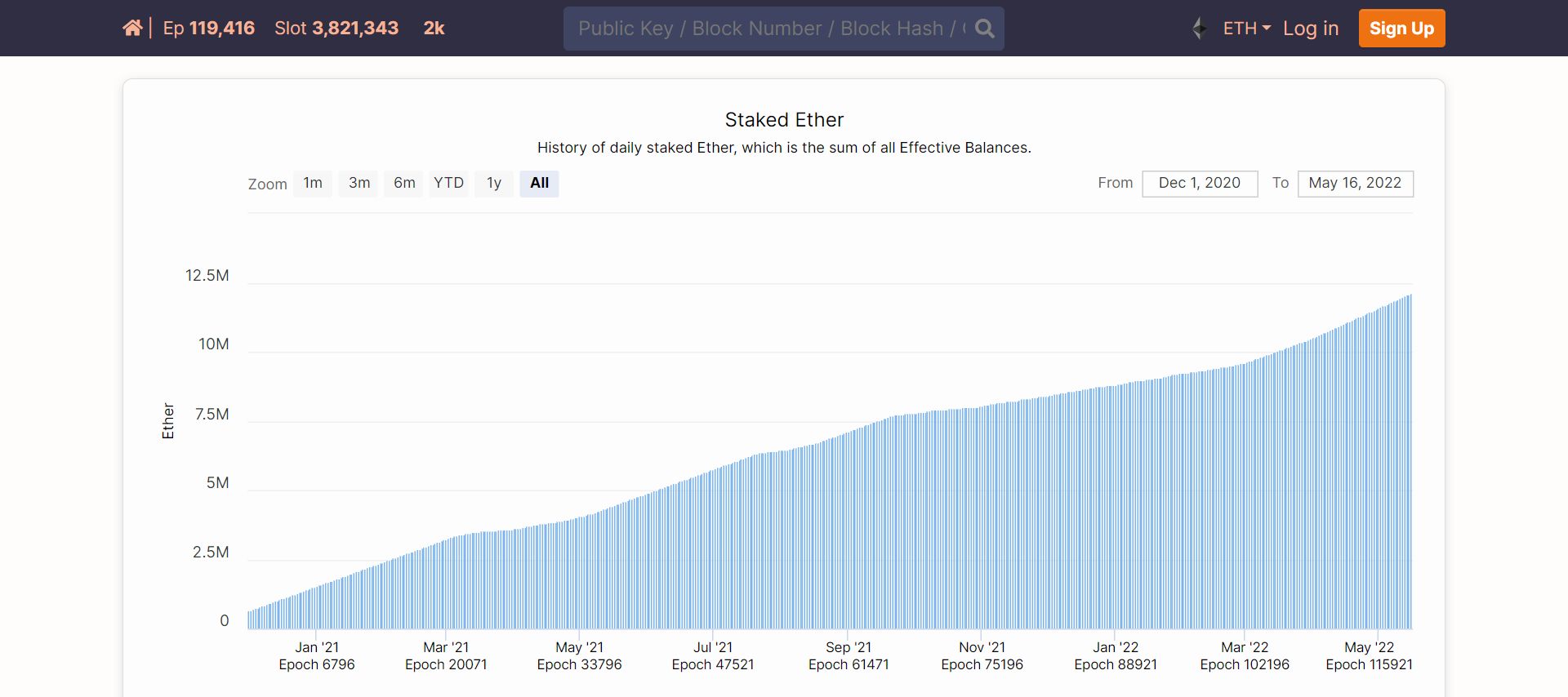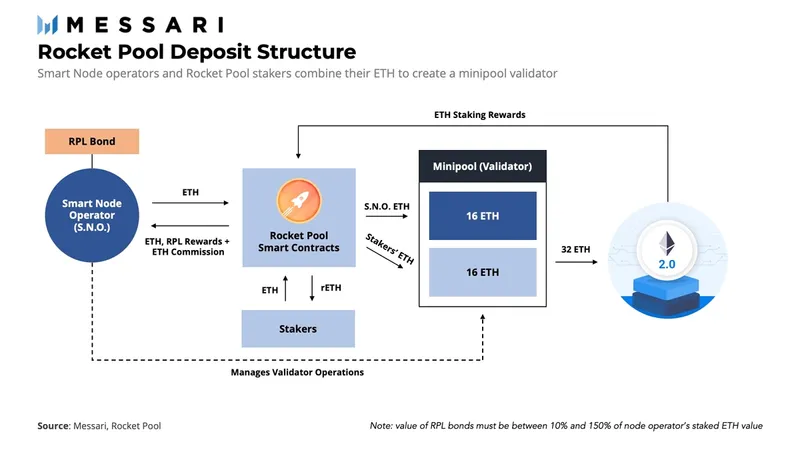Eth2, PoS and RocketPool: Brief Introduction
These are complex topics and each one of them would deserve much more than just 1 blog post, nevertheless, I will try here to make as simple a possible explanation of the main concepts and how they relate to each other.
1. Eth2 and its migration from PoW to PoS (The Merge)
If you had any interest in decentralized technologies and the world of Cryptocurrencies, you know about Ethereum, the second blockchain in importance, and the first one trying to become a global platform to run applications in a decentralized manner. Ethereum was conceived in 2013 by Vitalik Buterin and it used the technology available and understood at that time, PoW (Proof of Work), which was already in use successfully by other blockchains like Bitcoin or Litecoin, nevertheless, almost since its inception it was agreed that in the future migrating to another kind of consensus algorithm (I explain what is this below) was needed.
The main problems PoW presented for Ethereum are its huge energy consumption and its poor performance in terms of TPS (transactions per second). It was decided that a migration or transition to PoS (Proof of Stake) was necessary, and now, in 2022, after many years of work we are about to see the first results of that transition in production systems.
Nevertheless, PoS also comes with its own set of problems and complexities…

2. PoW versus PoS
The focus of this article is to talk about Ethereum2, its switch to PoS, and how RocketPool can help to solve some of the inherent problems of this switch, that is why I will leave some important topics out of scope, like centralization issues on PoW mining or organizational DAO attacks on PoS just to name a few of the more deep topics missing here. I will try to keep things as simple as possible.
Reaching consensus in the crypto space and between computers isn’t that different from reaching a consensus between a group of friends. PoW uses hashing power (compute resources) to solve a random number problem in which the higher the computational power the more possibilities you have to solve the block and process new transactions into the blockchain. PoS on the other side uses the amount of staked tokens (money, financial resources) in a similar fashion, the more coins you have staked the more possibilities you have to be the node introducing new transactions (validate a new block).
The main challenge between different consensus algorithms is to reach high levels, and equilibrium, between what is called the blockchain trilemma: Security, Speed, and Decentralization.
We know that PoW is unlikely to ever reach high speeds in terms of transactions per second, it is very secure and has certain problems regarding decentralization (51% attacks or mining pool concentration mostly) on top of that, the usage of computer resources to process numbers is what produces the high electricity usage of blockchains like Bitcoin.
On the other hand, PoS can reach easily higher speeds since it does not need the computational Work that PoW enforces to find the miner that should be rewarded and can do sharding (dividing the blockchain into small blocks) to achieve even greater speeds, security, or protection against 51% attacks, is similar to that of PoW, while in one consensus algorithm the attacker would need to have control over 51% of the total resources stacked, on PoW the attacker would need 51% of all the hashing(processing) power, and in both cases that is something equally expensive to obtain. The weakness of PoS is in the level of decentralization that can be reached.
So in general, when you think about PoS and achieving similar levels of decentralization to those of PoW what you want to achieve is a high number of Validators sharing between them the total amount that is being stacked.

It is important to mention that while you want a high number of validators the total can not be infinitely high, since that would make the data transmission between nodes not efficient, that is why in the case of Ethereum it was decided that a validator node needs to stake 32 Eths. This number is sufficiently high that the number of nodes will be maintained under control and also protects the network against some nodes having much more value stacked than others, which is something that can happen on Delegated Proof of Stake blockchains like Luna or Solana.
3. RocketPool and its push towards more Decentralization
If we look at the total amount of nodes on Ethereum 2 and the Total Value Locked(TVL) it is easy to see that the numbers describe a healthy transition even before the merge has already happened. The problem here is the level of decentralization. Centralized exchanges like Kraken are offering stacking services thus controlling a huge percentage of the existing nodes and on top of that a new stacking platform called Lido Finance has appeared to offer end customer tokenized stacking services, they have become so big that Lido controls now more than a third of the existing validators.

If an end-user wants to help decentralize the Ethereum network by running a node by himself he might find different problems, for starters that not everyone can afford 32 ETHs and also the technical difficulties of installing and running a validator. This is where RocketPool shines, trying to make it easy for everyone to run its own validator and helping decentralize the Ethereum ecosystem.
This is how RocketPool helps the Ethereum ecosystem and validators:
- You only need 16 Eths to run a node
- The hardware is cheap and easily available compared with Bitcoin mining ASICs
- 16 extra Eth provided to the validator node from users wanting to stake, this will produce extra rewards for the node operator
- Node operators will also receive extra rewards from the RPL tokens (these tokens are used as an additional security deposit from the node operators) increasing the gains from running a node
- The whole installation is scripted and very well documented to make it easier
There is a final positive influence that RocketPool is having in the Ethereum2 ecosystem, is helping to increase the variety of Ethereum2 clients running the PoS blockchain, this is important because if a huge proportion of Ethereum2 runs on the same client and if this client has an issue, a security flaw, for example, it can endanger the whole network. While most of lido finance is running using the Prism client RocketPool rotates the client that its node operators run (if they accept this mechanism) producing a broader distribution of nodes using different clients.

In resume, PoS can solve some important issues traditionally associated with PoW blockchains like Bitcoin and Rocketpool helps individual users to run their own nodes, earn higher rewards and fight centralization issues that might arise in the Ethereum2 world after the merge.